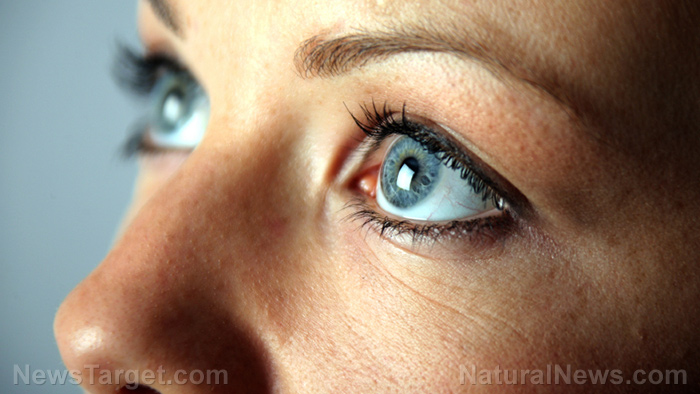Vitamin B3 protects eye degeneration and may prevent glaucoma
08/15/2018 / By Earl Garcia

Vitamin B3 or niacin may offer protection against glaucoma, according to a recent animal study. To assess this, researchers at The Jackson Laboratory in Bar Harbor, Maine analyzed mice that were genetically predisposed to glaucoma. Study data show that mice fed with vitamin B3-containing water kept a healthier eyesight for longer periods compared with mice receiving plain water. Researchers say the vitamin B3-infused water provided the animals protection against glaucoma.
The study also reveals that a single gene therapy using an enzyme that energizes brain cells helped prevent the onset of glaucoma in animal models.
“It can be a problem for patients, especially the elderly, to take their drugs every day and in the correct dose. So gene therapy could be a one-shot, protective treatment. Gene therapies, through injections into the eye, have been approved for a handful of very rare, human genetic eye disorders, and their demonstration of an important age-dependent factor may enable gene therapy for more common eye disease,” says Dr. Pete Williams, the study’s first author, in an article published in Sci-News.com.
These findings were published in the journal Science.
More studies show niacin’s efficacy against eye diseases
Previous research have demonstrated the efficacy of vitamin B3 or niacin in protecting the eyes from a host of adverse conditions. For instance, a 2006 study published in the journal Current Eye Research revealed that niacin supplementation boosted vasodilation in patients with age-related macular degeneration (AMD). Researchers examined 12 patients who are given either a single dose niacin or placebo. Study data shows that patients who were on niacin supplementation exhibited a significant increase in the inferior temporal retinal artery diameter compared with those in the placebo group. However, researchers say more studies are needed to confirm whether niacin therapy would be helpful in addressing retinal ischemic diseases.
Another study finds that niacin may help bolster choroidal blood flow in patients with age-related macular degeneration. An analysis of 12 AMD patients reveals that patients who received a single niacin dose displayed a 24 percent increase in choroidal blood volume at 30 minutes following administration. On the other hand, patients who were in the placebo group exhibited a 23 percent decline in choroidal blood velocity at 30 minutes after administration. The results of the 2004 study are published in The British Journal of Ophthalmology.
WHO data on glaucoma, age-related macular degeneration
Findings of the recent and previous studies may prove beneficial — especially as the number of reported cases of glaucoma and age-related macular degeneration worldwide is growing. According to the World Health Organization (WHO), glaucoma, and age-related macular degeneration are the second and third leading causes of visual impairment around the world, respectively.
According to the Glaucoma Research Foundation, there are approximately three million Americans suffering from glaucoma. However, only half of them are aware that they have the condition. Glaucoma is also associated with up to 120,000 cases of blindness in the U.S. This accounts to about nine to 12 percent of all cases of blindness in the country. The disease is currently the second leading cause of blindness in African Americans. Glaucoma-induced blindness is six to eight times more common in African Americans compared with Caucasians, according to the organization. Data also shows that African Americans are up to 15 times more likely to suffer glaucoma-related visual impairment compared with Caucasians.
Data from the National Eye Institute (NEI) show that age-related macular degeneration is the leading cause of vision loss among Americans. According to the NEI, the disease is most common among older Caucasians, affecting more than 14 percent of White Americans aged 80 years and older. A breakdown of AMD cases in the U.S. also show that 65 percent of women suffer from the disease, compared with only 35 percent of men.
To learn more about other forms of treatments and improving one’s health, visit Medicine.news.
Sources include:
Tagged Under: blindness, eye health, glaucoma, macular degeneration, natural cures, natural remedies, Natural Treatments, niacin, vitamin B3



















